USS MULLINNIX DD-944
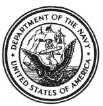 Commissioning
Commissioning
1958
Mullinnix Commissioning Video (.MPG)
Courtesy Jack O'Connell & Jim Young
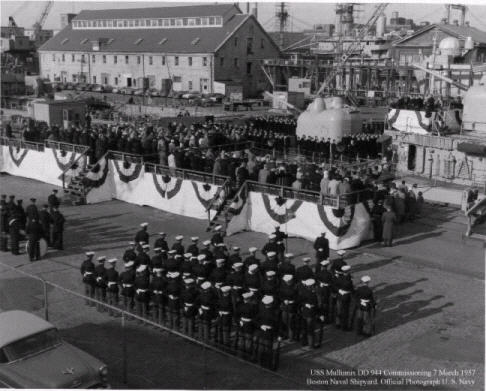
USS Mullinnix DD-944 Commissioning 7 March 1958 - Boston Naval Shipyard


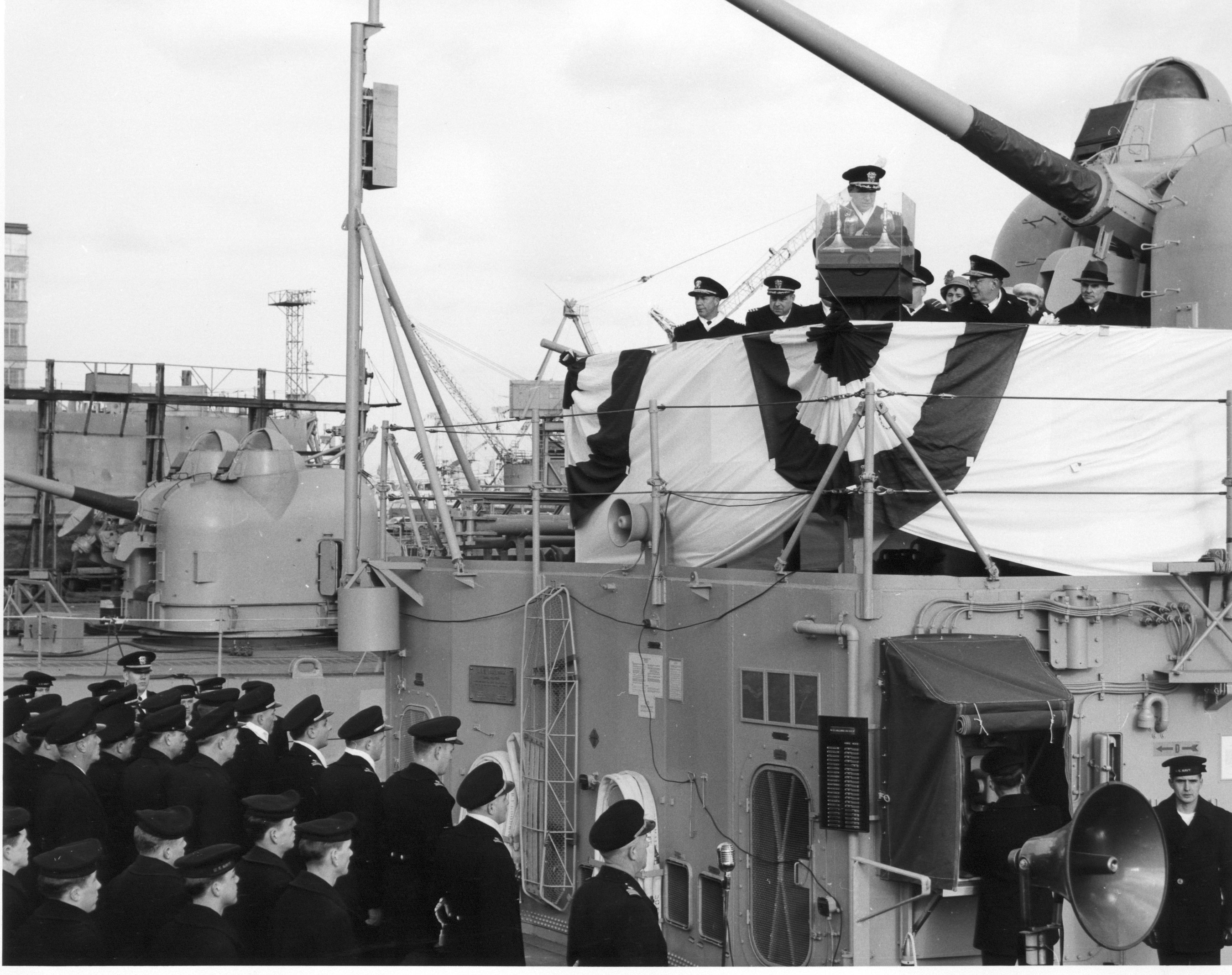
CDR Anderson - USS Mullinnix DD-944 Commissioning 7 March 1958


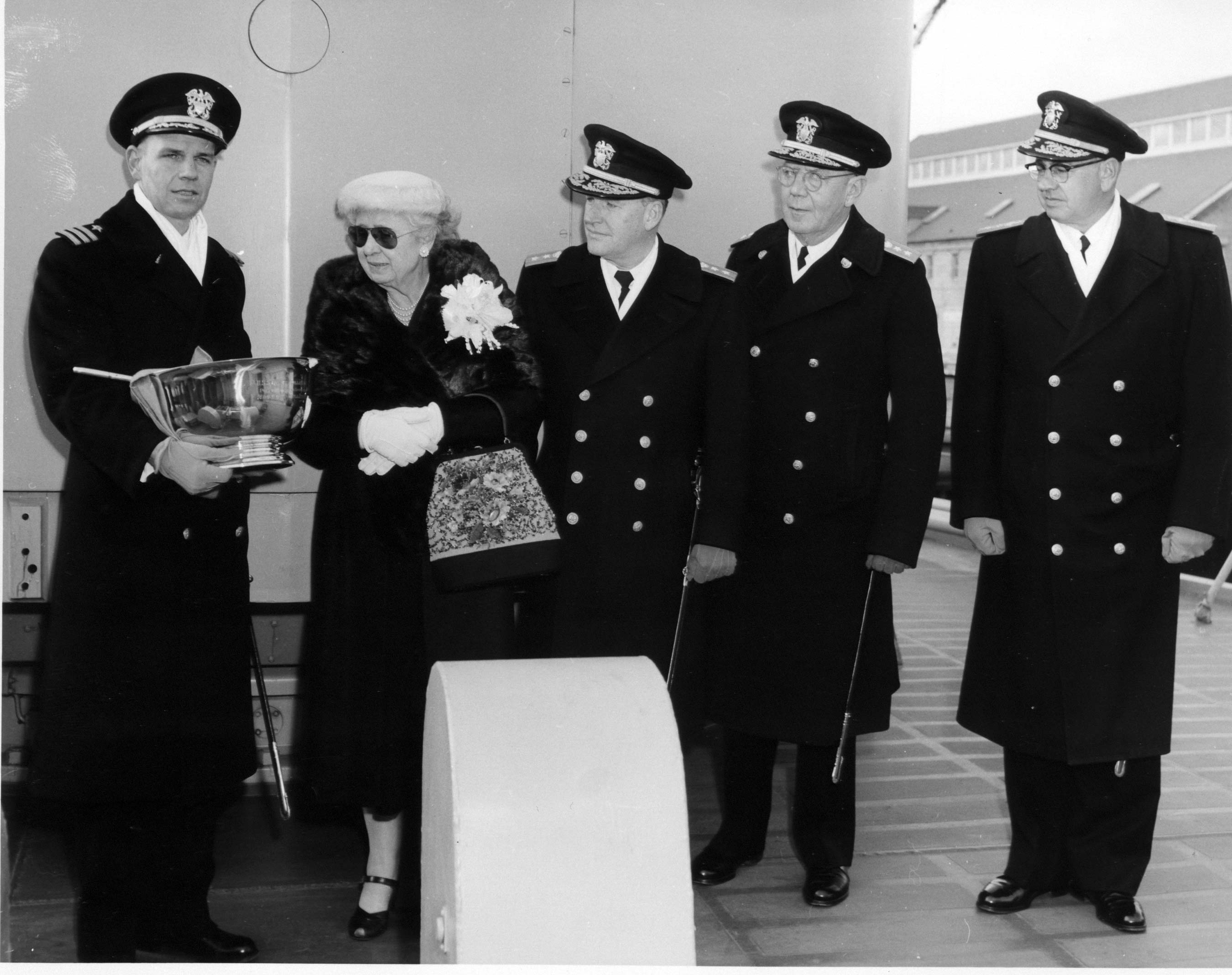
Mrs Mullinnix - USS Mullinnix DD-944 Commissioning 7 March 1958


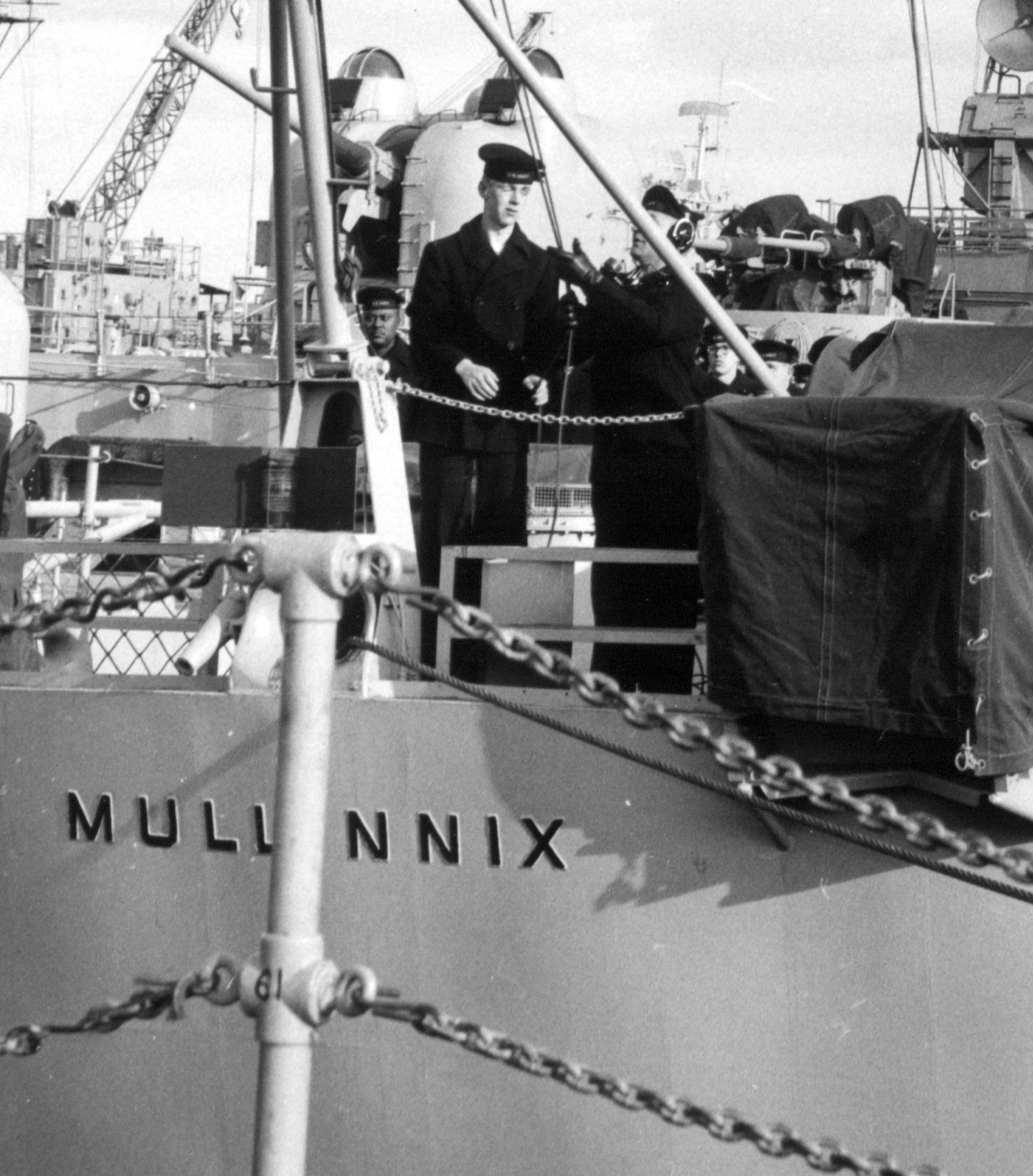
USS Mullinnix DD-944 Commissioning 7 March 1958


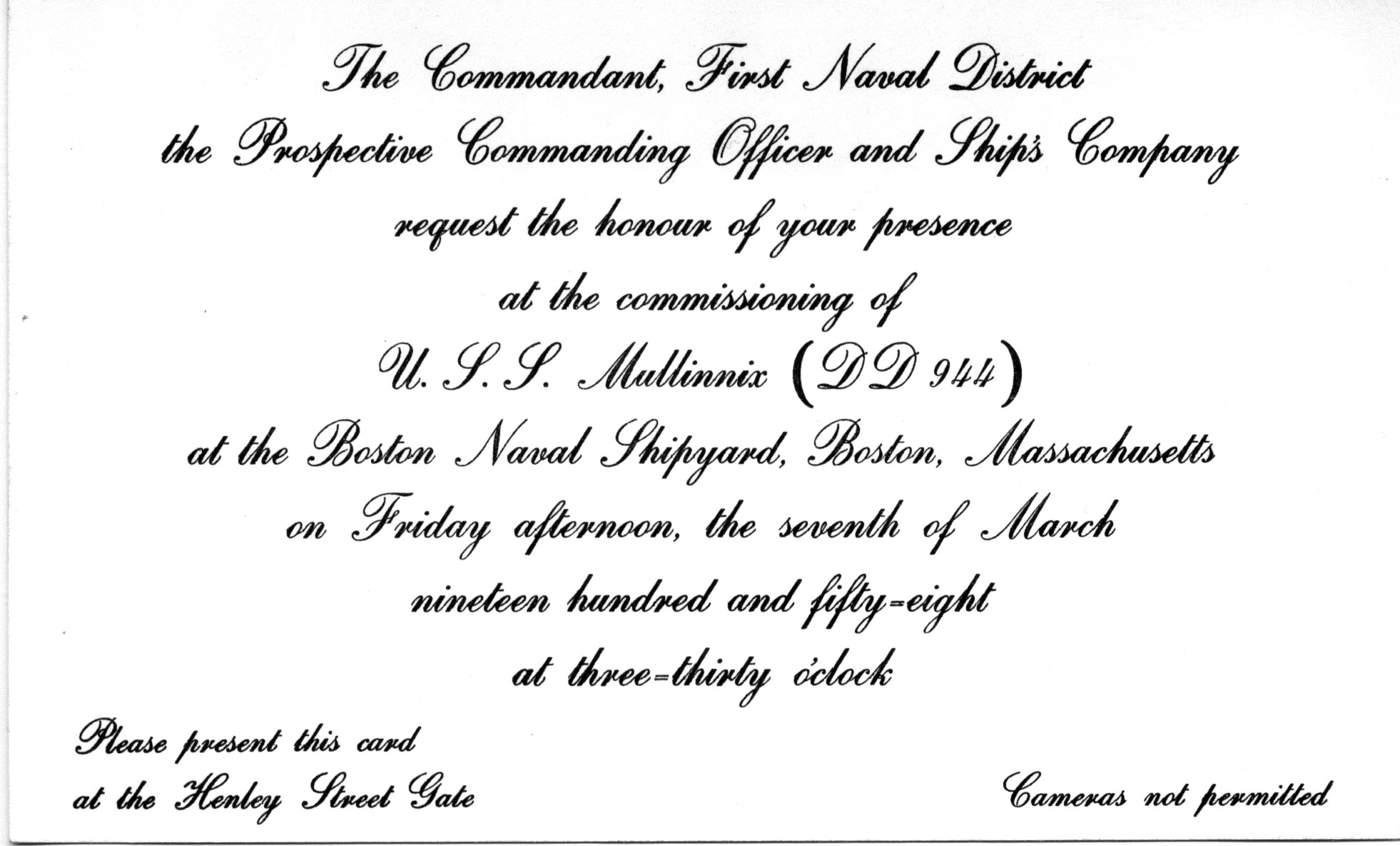
Invitation to USS Mullinnix DD-944 Commissioning 7 March 1958
Courtesy of Howard Everett


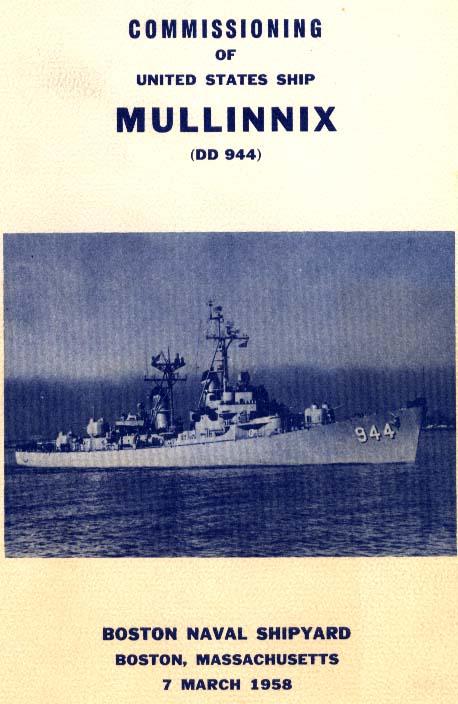
Click on image to download
USS Mullinnix DD-944 Commissioning Brochure
7 March 1958 (PDF File)


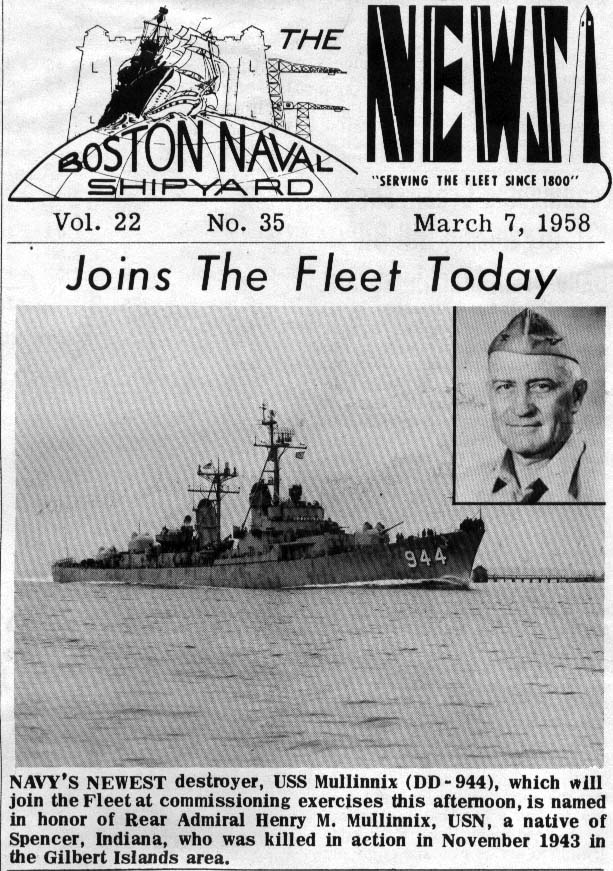


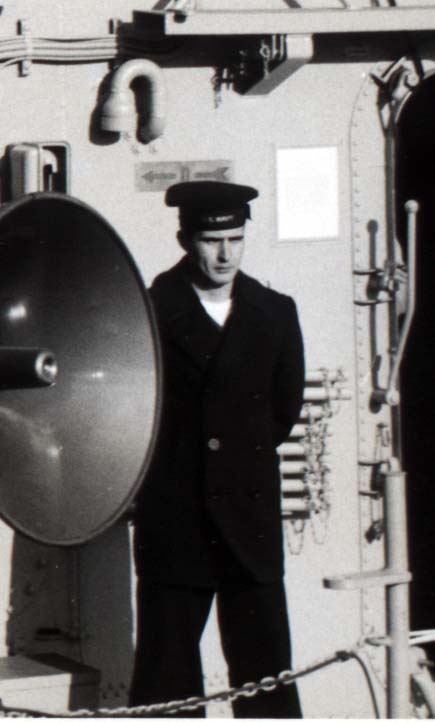
Seaman Of The Watch
USS Mullinnix DD-944 Commissioning 7 March 1958
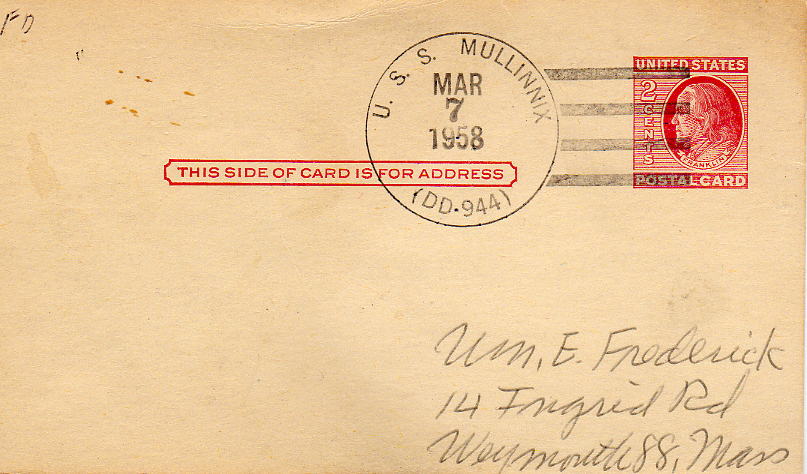
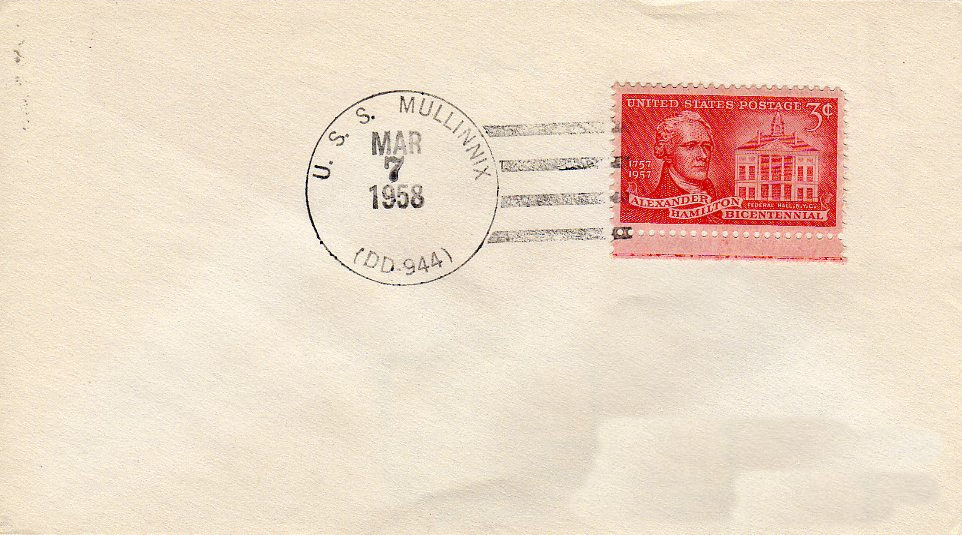
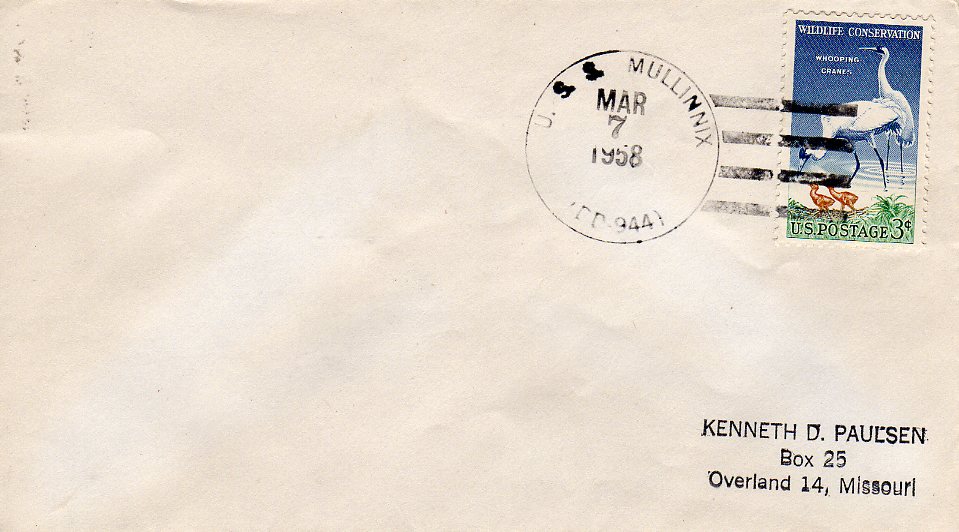
Excerpt from “The Last Gun Ship - History of USS Mullinnix DD-944”
A Historical Novel By Frank A. Wood
She steamed out of Boston Naval Shipyard. And so it began - the life of Mullinnix. The life of her crew. Men from across the country that from the results of some unknown naval-lottery were tossed into a destroyer melting pot to become shipmates. Shipmates, eternally joined at the hip as plank owners of Mullinnix.
A plank owner is a crewmember who is assigned to a U.S. Navy ship on the day of the ship's commissioning. The naval term 'plank owner' finds its origin back in the days of sailing ships when sailors slept on deck. Because some planks of the deck were softer than others, the crew would select those to sleep upon, and in time would regard them as their own. In many cases, when the ship was dismantled, crew members would, in fact, lay claim to these planks as mementos of their seagoing days.
The sense of ownership felt by a ship's crew, especially by its commissioning crew, has carried this naval term into the twenty-first century – to today's steel ships.
The August 1957 edition of All Hands Magazine recognized the fact that the fleet was being strengthened by the addition of Mullinnix and a number of her sister ships in an article entitled 'New to the New Navy'. Stating, "Other 2800-tonners which either are or soon will be in the fleet includes: USS Jonas Ingram DD-938, USS Dupont DD-941, USS Bigelow DD-942, USS Blandy DD-943, USS Mullinnix DD-944 and unnamed DDs 947, 948, 949, 951. Boston has already commissioned USS Davis DD-937 and USS Manley DD-940, the latter getting her name from Commander John Manley of Revolutionary War fame."
After commissioning, Mullinnix commenced a two month fitting out period in the Boston Shipyard. During this fitting out period Mullinnix received the helicopter modification which would allow a helicopter to land on her fantail.
Though now officially commissioned, the officers and crew had much work still ahead of them before heading to sea. Mullinnix remained moored starboard side to Pier 1E in the Boston Naval Shipyard until 12 March at which time the ship moved to berth 4W, Pier 4 under tug power from YTB 367. Days were filled with laying in stores, supplies, and spare parts. Many hours were spent getting familiar with the new equipment and machinery plus the genesis of all the preventive maintenance procedures.
Some of the major structural testing required Mullinnix to be removed from the sea. Therefore, on 17 March at 0830 the special sea and anchor detail was set and the ship got underway at 0906 for drydock #1 with the aid of tugs Juno and Mars. After entering the drydock and once the caisson was in place, water was pumped out of the dock and Mullinnix came to rest on the keel blocks at 0953. The balance of the morning was spent inspecting all hull openings. The Hull Board, accompanied by LCDR Murray, inspected the underwater hull and fittings the following day.
Another Mullinnix first took place the morning of 20 March in the form of seaman William "Willy" Zofrea as he was award the ship's first Summary Court Marital for "disobedience of an order, shirking duty, and disrespect to a petty officer".
Those that knew Willy weren't surprised. He was a slender, cynical guy, a sweaty, foul-smelling chain smoker, given to oil stained dungarees with the top buttons missing exposing a mass of black chest hair and a ball cap with the bill rolled like a Cuban cigar. His lungs made sounds as if he had just labored up a mountainside. He wasn't going to be a lifer but nobody could envision Willy being any happier anyplace else. He was in his element when at sea. The Mullinnix was his third ship. A former petty officer himself, he didn't value the idea of promotions. He simply wanted to go to sea again. No one really understood what Willy may have been chasing nor thought he'd ever catch up to it.
The petty officer he had the misunderstanding with was a dumpster load of whaleshit by the name of Clarence Kaufman – 'Coughin-Kaufman' or 'CK' for short. The man suffered from a bad case of terminal assholeitis. A large harassed-looking E6 with thick lips and a watery eye. The type that couldn't wait to go to sea. Some say he was brave, enterprising, and utterly reliable but for all of this he never had made Chief. He had, unfortunately, a sadistic streak. The toothbrush had to have been invented in his home state. Any place else it would have been called a 'teethbrush'.
CK had found Willy leaning against MT 51 smoking a cigarette with two fellow shipmates.
"Hey Zofrea, when you get done dickin' the dog, I want you to go to the paint locker and requisition paint and supplies to paint the davits on the Captain's gig. And it needs to be done before you knock off today!", barked Kaufman.
"Go tie your dick in a knot", Willy laughed.
"You sorry fuck, you've mouthed me for the last time!" With a bright red flush crawling out of his collar headed to his scalp like mercury in a thermometer dipped in boiling water, ole' CK stormed off to find the Officer-of-the-Watch.
Laughing some more, Willy lauded, "That man is a waste of fresh air!"
Work, training, and drills never slowed in the early days of life on Mullinnix. The Captain took an active role to insure his new ship was prepared, inspections of lower decks, holds, and storerooms were common, drills a daily occurrence.
The rain stopped and the sky was marbled with purple and gold clouds, and through the Mullinnix stacks you could see the sunlight winking as the flooding commenced in the dry dock. At nine feet, all underwater compartments were inspected and found free of flooding. At 1408 the ship cleared the keel blocks and with the aid of civilian tug Luna towing astern cleared the still at 1507 headed to pier 1 East in the Boston Shipyard.
The month of April was filled with more training, more inspections, more drills that included general quarters and dock trials. Some of the crew were sent TDY for training purposes to locations like Fleet Air Defense Training Center at Dam Neck, Virginia. Almost 157,000 gallons of JP5, an aviation jet fuel that was used in place of black fuel oil by ships of this era, was pumped into her fuel tanks.
Finally, the day had arrived. Sea trials. Even though it was early spring, the wind was cool and smelled of salt and had the slight smell of sour fish. At 0400 fires were let under 1A, 1B, and 2B boilers. With the sun struggling to break through the clouds and occasionally succeeding, Mullinnix slipped from the pier into Boston Harbor headed to the Boston OpArea in accordance with orders from COMONE and instructions of the COMMANDANT.
Boston Harbor is the largest seaport in New England and the principal distributing point for regional commerce. The principal route for deep-draft vessels to and from Boston Harbor is via Boston North Channel to President Roads to Boston Main Channel. Numerous islands, shoals and rocks call for extreme caution. With the aid of the pilot and the experience of Captain Anderson, the ship maneuvered the varying channels, entered President Roads, slid passed Deer Island Lighthouse, finally entering North Channel.
With Buoy #5 bearing 150, the OOD set course 120 for Boston OpArea 4. Mullinnix was steaming under her own power at 15 knots. The rawness of the Navy’s newest fighting machine sent shivers down the spines of the crew, pride swelled in the chests of the lifers, and a Mona Lisa-like smile passed across the face of the CO. The waiting was over. It was time to put this baby through her paces. To see what she was made of. To see if she had the steel to be named The Mighty Mux.
At 0929, the morning of 18 April, 1958 Mullinnix entered international waters for the first time. There wouldn’t be any midwatch or midrats. There wouldn’t be gunnery exercises. No liberty. If only for a day, to be at sea was what the Navy was all about. Sailors belong at sea. Ships belong at sea. Mullinnix was finally home.
With conducting gyro compass, magnetic checks and degaussing checks, and sonar equipment checks, and testing the Welin Davits by launching and retrieving the whaleboat, the crew had a full day. Each department head had a laundry list of checks, tests, and procedures that needed to be completed on virtually every piece of equipment on the ship.
Friendships were forged. Old salts helped the Seaman Apprentice and the Fireman. Lifers were tolerant of the inexperience and immaturity of the younger members of the crew. And yes, one or two of the CPOs became sea daddies to the boot ensigns…
A dark cloud moved across the sun, dropping the Mullinnix into shadow as she tied up to Pier 1E, Boston Naval Shipyard with a broom atop MT52, signifying its clean sweep of the ship's initial sea trials. All-in-all, a full and fulfilling day.
Dawn broke on the morning of 24 April. As the sun ebbed above the horizon, the reflected sunlight raced towards the Mullinnix like a blanket. Preparation were being made to steam to Peddocks Island to load the magazines with ammunition. By 0800 however a heavy fog blanket and cut visibility to 300 yards. With visibility severely limited, steering the various courses at various speeds using markers such as the Logan Aero Beacon and Castle Island Light took the utmost skill and professionalism.
By 1100, Mullinnix was at anchor at ammunition anchorage area 5 Peddocks Islands, Nantasket Roads off Weymouth, Massachusetts. The Mullinnix was cloaked in a dense fog that blotted out the sea and everything else more than 300 yards away. With Mullinnix sounding fog signals at anchor, tug YTB-357 gently guided ammunition barges YFN-288 and YFN-645 from the US Naval Ammunition Depot, Hingham, MA, alongside starboard to begin loading the high explosives.
The loading of ammunition is, to state the obvious, a manual process. Equipment is used to place the pallets of ammo on the fantail and foc’sle. From the pallets to the ammo racks inside each of the magazines, a human chain of sailors is used to pass the 70+ pound shells and the 40+ pound powder casings. One at a time, down ladders, through passageways and hatches. Hundreds and hundreds of rounds until the magazine were full of the fire power that makes a destroyer a destroyer…700 rounds per 5" magazine.
Loading ammunition was completed the following morning. With two civilian electronic engineers on board, at 1021 the special sea and anchor detail was set to get underway to Op Area #4. Once inside the operations area, Mullinnix commenced conducting antenna radiation pattern tests with the electronic facility in Nahant, MA while maneuvering in clockwise circles with right rudder angles between 10 and 15 degrees, speed 10 and 17 knots. The day completed, she tied up starboard side to USS Willis A. Lee DL-4 at South Jetty, South Boston Annex, Boston Naval Shipyard.
Mullinnix was underway once again on 28 April for her first live fire exercises. She entered international waters on a cloud-free morning at 0755. The air was cold, almost numbing to the skin, but for many of the crew, this day would be the very first time they would see the armament in action.
While at general quarters, the ship fired 48 hedge-hogs and 24 rounds of 3"/50 caliber gun ammunition, performing structural test firing tests.
The evening of 2 May marked the first fire aboard Mullinnix. Next to incoming fire from the enemy during battle, fire aboard a Navy ship is the most dangerous situation, one that no sailor takes lightly. The fire was caused by the bus transfer coil in the forward engine room while switching from normal to emergency power. The Damage Control Party was called away and took care of business in short order, their training having paid off in spades. No one was injured.
3 May was a memorable day for the sailors aboard Mullinnix for a number of reasons. First, it was goodbye to Boston Shipyard for good, the umbilical cord cut. Second, with buoy 5 abeam to starboard, at 1100 Mullinnix slipped out of North Channel headed for her home port in Norfolk, Virginia. Finally, structural test firing with the big guns – the 5"/54s.
At 1249 the crew was exercised at General Quarters. At 1322 the guns commenced firing, expending 15 rounds BL and P, 65 rounds AAC with mechanical time fuse and 80 rounds powder cartridge full non-flashless.
To be continued…
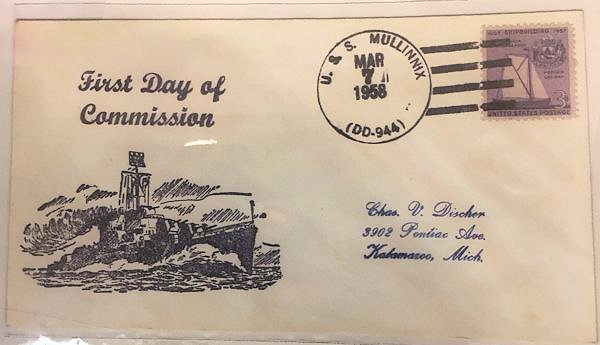
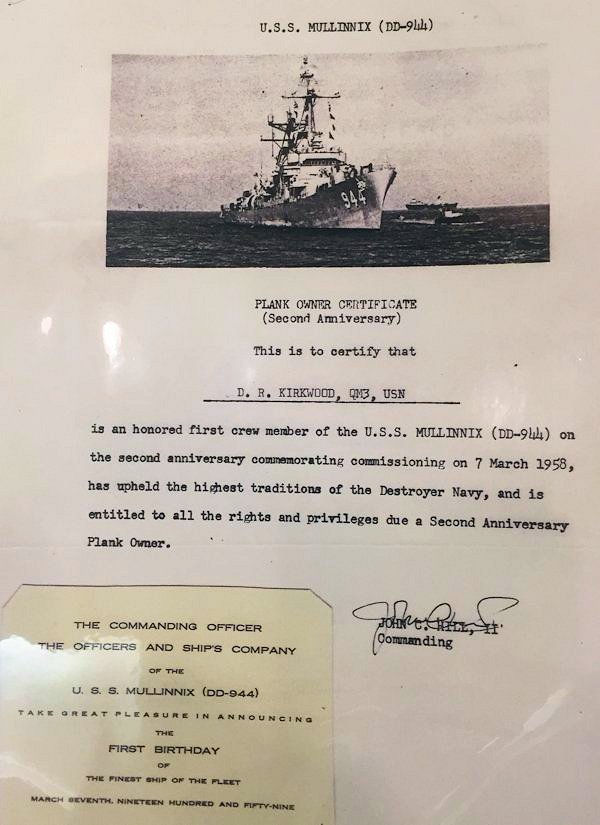
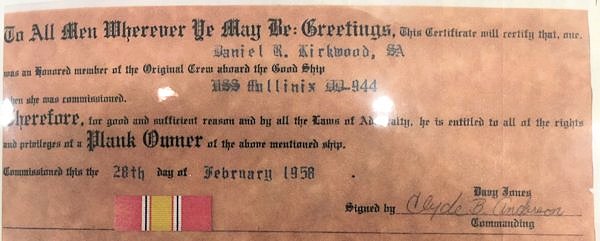
GO TO Norfolk, Virginia
Back to Construction 1957
Back to Ship History
Home
© 2006 by Frank Wood, All rights reserved
 Commissioning
Commissioning Commissioning
Commissioning























